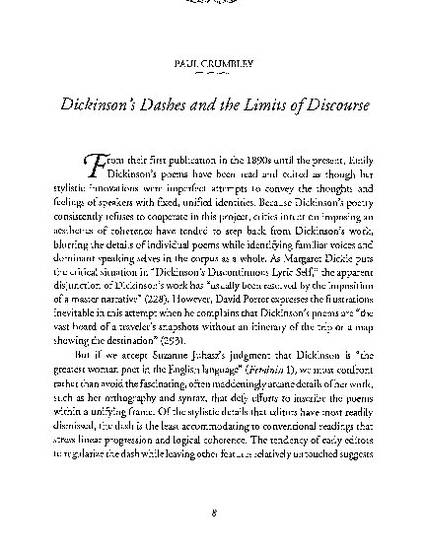
From their first publication in the 1890s until the present, Emily Dickinson's poems have been read and edited as though her stylistic innovations were imperfect attempts to convey the thoughts and feelings of speakers with fixed, unified identities. Because Dickinson's poetry consistently refuses to cooperate in this project, critics intent on imposing an aesthetics of coherence have tended to step back from Dickinson's work, blurring the details of individual poems while identifying familiar voices and dominant speaking selves in the corpus as a whole. As Margaret Dickie puts the critical situation in "Dickinson's Discontinuous Lyric Self," the apparent disjunction of Dickinson's work has "usually been resolved by the imposition of a master narrative" (228). However, David Porter expresses the frustrations inevitable in this attempt when he complains that Dickinson's poems are "the vast hoard of a traveler's snapshots without an itinerary of the trip or a map showing the destination" (293).
